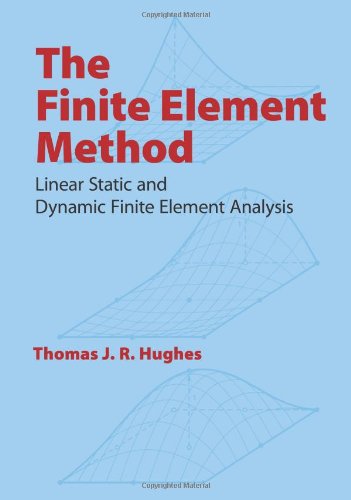The finite element method. Linear static and dynamic finite element analysis pdf
Par patrick cynthia le vendredi, mai 6 2016, 14:51 - Lien permanent
The finite element method. Linear static and dynamic finite element analysis. Thomas J. R. Hughes

The.finite.element.method.Linear.static.and.dynamic.finite.element.analysis.pdf
ISBN: 013317025X,9780133170252 | 825 pages | 21 Mb

The finite element method. Linear static and dynamic finite element analysis Thomas J. R. Hughes
Publisher: Prentice Hall
The equations of motions are assumed to be simple harmonic with the presence of static coupling and with the absence of dynamic coupling. Finite Element Analysis (FEA) is a numerical technique for finding approximate solutions of partial differential equations (PDE) as well as of integral equations. The solution approach is based ei. It is well documented that for the effective modelling of the static and dynamic behaviour of elastomeric components using the finite element (FE) method it is essential to obtain material parameters that are derived from a range of physical tests. Wu and Taylor [6, 7] applied finite element analysis for two dimensional nonlinear transient waves. Systematically cover an introduction to FEA, how computers build linear-static and linear-dynamic finite element models, the identification of error sources, error control methods and error-controlled analyses. For a conventional linear Dynamic physical tests and analyses of ethylene propylene diene monomer (EPDM) disc samples are described and insights into the consequences of pre-stressing samples and swelling phenomenon are also offered. FEA Solver background of Linear static analysis. For this purpose, the patellofemoral joint was modeled in a dynamic finite element knee model with and without a patellofemoral joint replacement. Every analysis is this thesis is done by using ETABS 8 package. The basic finite element equation to be solved for structures experiencing static loads can be expressed as: Ku = P. Analysis Software: There is much finite element software for analyzing structure. Finite element-based linear static and dynamic analysis module. Nakayama and Washizu [5] employed the boundary element method for the problem. In the following paragraph we will discuss some of its features- This integration means that you create only one model of the floor systems and the vertical and lateral framing system to analyze and design the entire building.